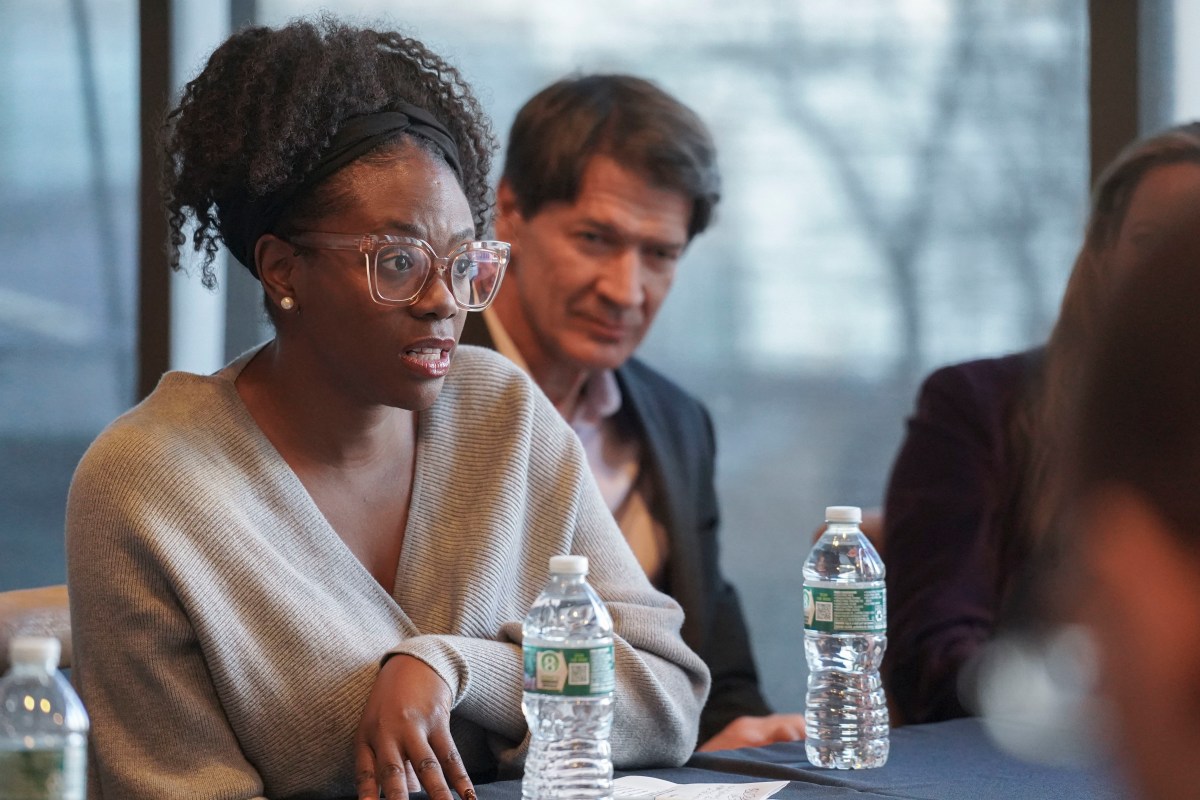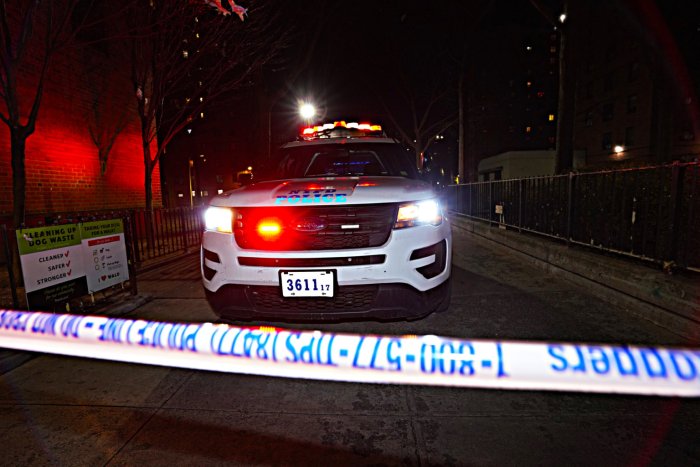By Albert Amateau
Volume 80, Number 35 | January 27 – February 2, 2011
West and East Village, Chelsea, Soho, Noho, Little Italy, Chinatown and Lower East Side, Since 1933 The faithful and stubborn former parishioners of Our Lady of Vilna, the Lithuanian Catholic church closed by the New York Archdiocese nearly four years ago, are still hoping to win a permanent injunction barring demolition of the building, located right near the entrance to the Holland Tunnel. Should they prevail, it would represent a stunning precedent under which parishioners — and not the Catholic Church — would have the ultimate power to determine the fate of their church buildings. A core group of men and women who still hold 1 p.m. Sunday vigils on the steps of the 1910 church on Broome St. are basing their hope on their petition to the Court of Appeals in Albany, the state’s highest state, to reverse lower court and appellate rulings affirming the archdiocese’s right to demolish the building. “We are energized that the Court of Appeals in Albany considers our issue an important one and decided to look into it,” said Mindaugas “Gus” Blaudzinas, a member of Our Lady of Vilna parish for the past 15 years. Despite the fact that the congregation lost in two courts, they were able to stop the demolition because the courts issued a temporary restraining order against demolishing the building.
Harry Kresky, attorney for the congregation, received permission from the Appellate Division on Nov. 4 last year to continue the appeal because one judge on the five-member appellate panel found in favor of the group. Kresky filed a 33-page brief on the appeal on Jan. 12, which was within the 60-day filing deadline. A Court of Appeals hearing on the matter is not likely before May, after lawyers for the archdiocese reply to the brief and Kresky has an opportunity to respond.
In February 2007, Cardinal Egan, then archbishop of New York, decided to disband the parish and demolish the building because of the roof, which was found to be unsafe, and because church functions like weddings and funerals had not been held there for a year. But Blaudzinas said this week that the Masses, held in the church’s basement after the main sanctuary was closed for roof repairs, were crowded with parishioners.
“Of course no one would have a wedding in a church where the roof was being repaired,” Blaudzinas observed.
The issues involved in the Our Lady of Vilna appeal are similar to those in the long court fight to save St. Brigid’s Church on Avenue B, said Kresky, who also represented the parishioners of that East Village church. But St. Brigid’s legal issues were not settled because the court cases were withdrawn after an unidentified “angel” donated $20 million to the archdiocese to restore the badly deteriorated 1849 building, revive the parish — which had been disbanded in 2004 — and endow the parish school. “Our angel is still not imminent,” said Blaudzinas. So the legal issues remain to be thrashed out in the Our Lady of Vilna case before the Court of Appeals.
The question is whether the state’s Religious Corporations Law, on the books since the turn of the 20th century, prohibits demolition of a Catholic church building without the approval of the parishioners, says Kresky’s brief. The archdiocese and the lower court held that demolition does not require parishioners’ approval. Indeed, the courts and the archdiocese held that submitting such a question to a civil trial would involve a court in “matters that are ecclesiastical in nature,” and run afoul of the First Amendment. Another issue, according to Kresky’s brief, is whether the parishioners have any right to sue after the archdiocese disbanded the Our Lady of Vilna parish. The court and archdiocese lawyers say no, but the Our Lady of Vilna congregants say yes. Blaudzinas noted that Lithuanian immigrants, many of whom were longshoremen who worked on the nearby Hudson River piers, erected the church. Another wave of Lithuanian immigrants came around World War II, and a third Lithuanian immigration wave came after 1991 when the country became independent from Russia. Blaudzinas recalled that in April 2007, the president of Lithuania issued a statement after a visit with Pope Benedict XVI, noting that Lithuanian immigrants in Manhattan built Our Lady of Vilna Church with their own money “to have a place for worship and witness their love and faith in God.” With time, the church also became a center fostering Lithuanian culture and national identity, the statement said. Asked whether the congregation would sue to compel the archdiocese to reconstitute the Our Lady of Vilna parish, as well, Blaudzinas said, “Down the line it might be a next step, but there is no precedent for that.” Instead, Blaudzinas said the congregation is looking into “the possibility of starting a new dialogue.” Leaders of the congregation met with New York Archbishop Timothy Dolan and hope that he finds favor with their cause, Blaudzinas said. A spokesperson for the archdiocese said there would be no comment while the matter is the subject of a court action.
The church is named for the Virgin Mary, who appeared in visions 400 years ago in Lithuania.
Lady of Vilna appeal goes to state’s highest court




































